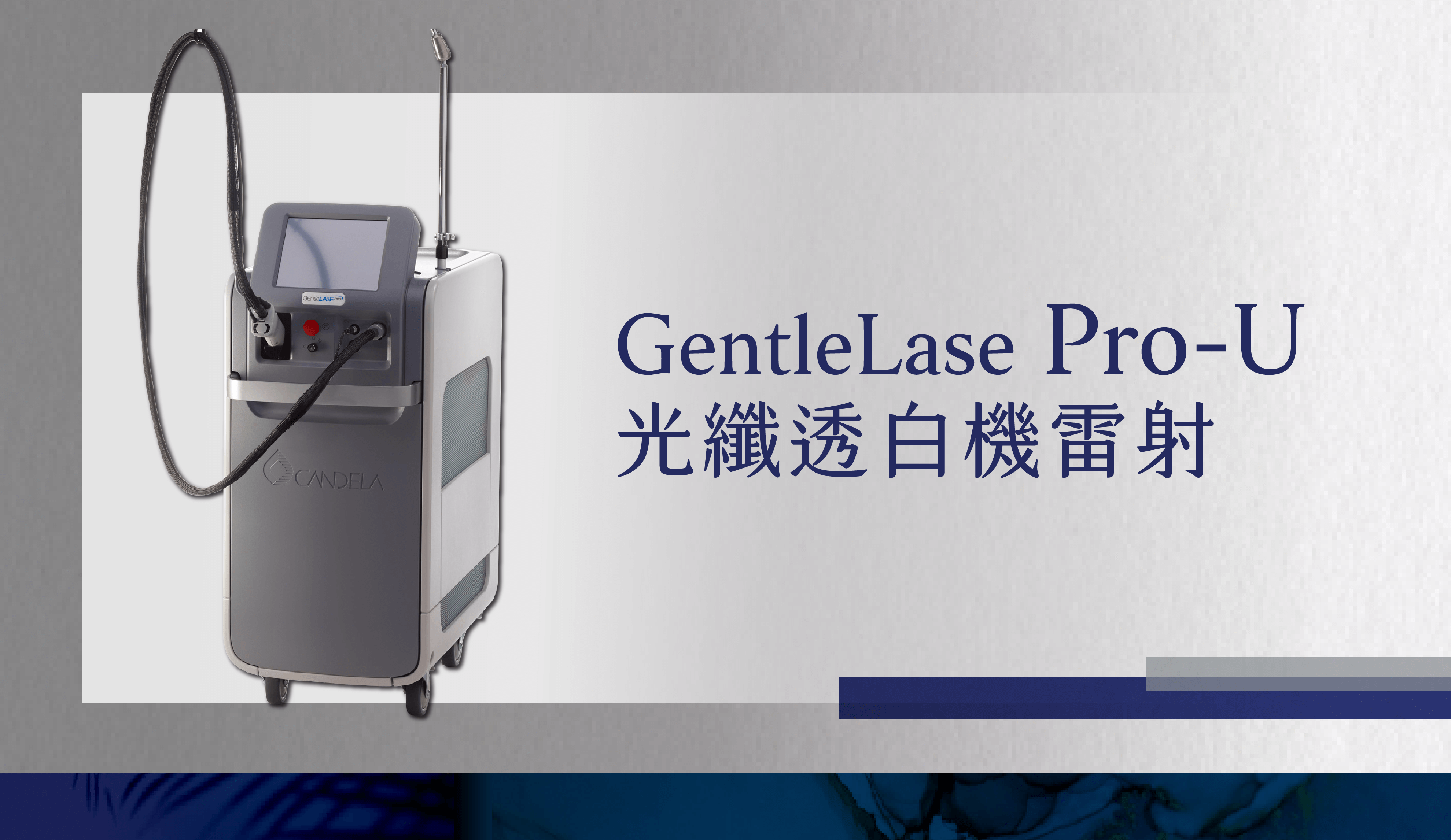
GentleLase ProU 透白肌,找回乾淨的肌膚
- 中文名稱:肯第拉普若雷射系統。
- 英文名稱:Candela Famiily of Multiple-Wavelength Laser Systems。
- 衛署醫器輸字第025483號 。
亞歷山大除毛雷射第三代ProU,雷射能量穿透皮膚組織,光能被毛囊中的黑色素吸收轉換成熱能,破壞毛囊細胞,抑制毛髮後續的生長能力,以755nm波長的激光能量滲透到毛囊根部,光源被毛髮的黑色素吸收後,所產生的高熱會破壞毛囊組織,令毛髮枯萎脫落,因此能在無損周邊皮膚組織的情況下,徹底破壞毛囊組織,因此需要連續數次治療能得到較完整的效果。隨個人體質及治療部位的不同,需要的次數也有所不同。
作用原理
毛孔內的毛囊、毛幹是毛髮生長重要結構,而GentleLase Pro-U就是利用黑色素對755nm光的選擇性吸收,產生光熱效應破壞毛囊再生結構。同時搭配表皮冷卻系統,減少造成皮膚的傷害,進而達到除毛、緊縮毛孔,使肌膚更為滑嫩。Pro U雷射透白機具備[可調式脈衝時間]功能,除此之外還能治療各種色素斑、老人斑、雀斑、痘疤、曬斑,都是透白機的適應症。
除毛效果維持時間視治療次數而定,一次治療約改善30%~40%的毛髮量,一般6~8次的治療可改善6~8成。但是毛髮有一定的再生能力,除毛過程中很難涵蓋所有的毛髮,少部分的毛髮無法完全受到破壞,經過一段的毛髮休止冬眠時期,毛髮可能又會回復生長,所以有少數人需6~10次或更多次的雷射治療。
Bulb/Bulge為提供毛髮生長所需養分的主要部位,由毛幹吸收雷射光所產生熱能,需有效傳達至Bulb/Bulge才能達成時間性除毛的效果。
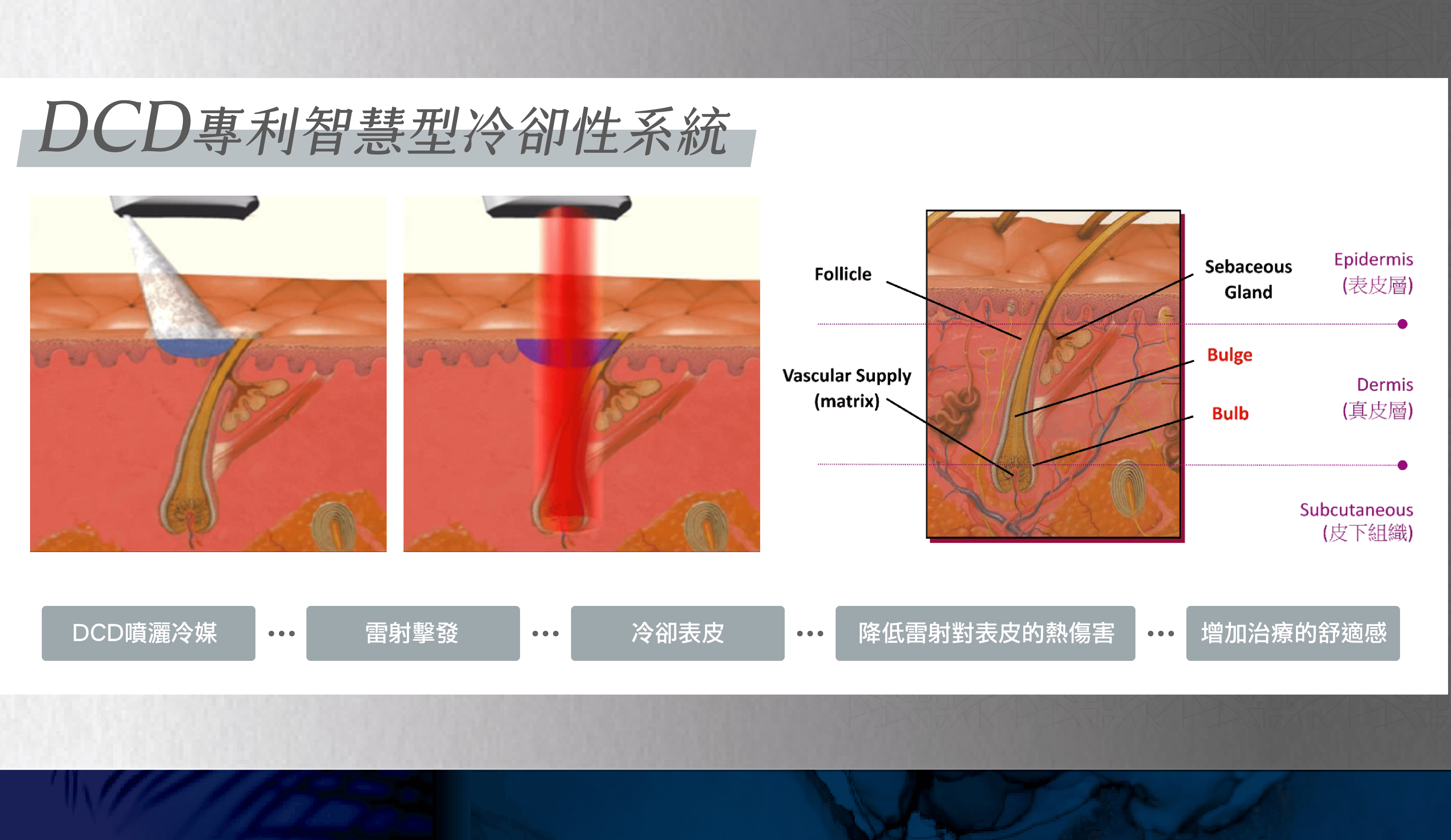
採用CANDELA獨有的原廠專利DCD™ (Dynamic Cooling Device™) 智慧型動態冷凍系統,在發射激光前毫秒間噴射-20度霧態冷凍劑CRYOGEN,有效保護、冷凍及鎮靜紓緩肌膚,避免皮膚灼傷之餘,令激光脫毛療程變得舒適無痛。
CANDELA GentleLase PRO™ 採用755nm激光波長,比810nm波長的激光更易被毛髮黑色素吸收。
經醫學證實,755nm激光波長對黃皮膚及白皮膚最有效。
毛髮的生長週期
毛髮有分成生長期、衰退期、休止期,在生長期的毛囊內有豐富的黑色素,而休止期以及衰退期的毛囊內的黑色素減少,所以雷射作用效果就差強人意。不同位置的毛髮生長週期會不太一樣,腋毛的週期大約是三個月,腳毛的週期則是六個月。所以不同位置建議的治療間隔時間也會稍有不同。
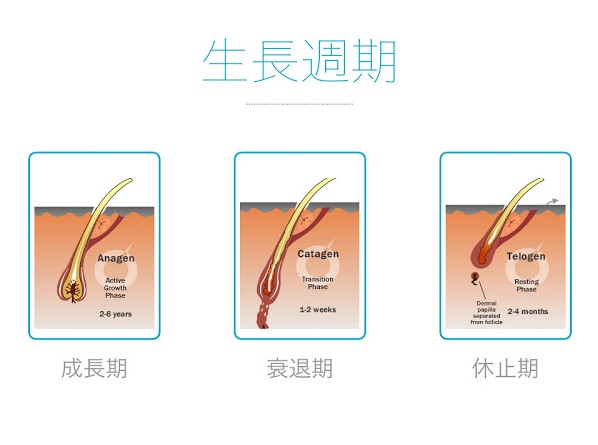
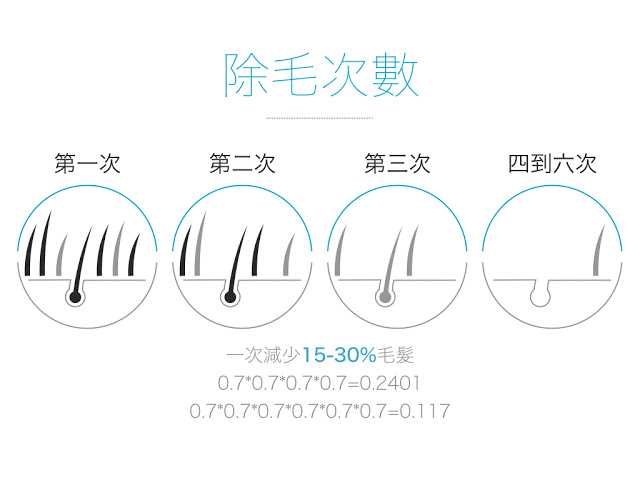
除毛次數
因為每次除毛針對生長期的毛髮效果較好,而休止期以及衰退期的毛髮則效果較差,所以平均一次除毛雷射可以除的毛髮為15-30%左右,因此平均除四次剩下24%左右毛髮量,除六次剩下11%毛髮量。
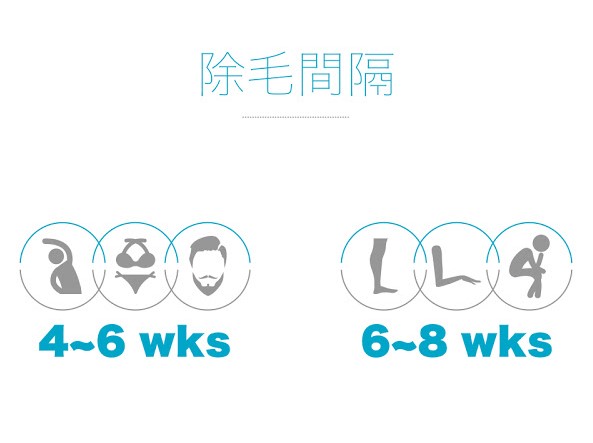
除毛間隔時間
腋毛、鬍子、比基尼毛髮建議4-6週一次,而手毛、腳毛,軀幹上的毛髮則建議6-8週一次。
除毛術後照顧
在剛開始做完後會有些毛囊輕微紅腫的現象,這時候只要做好保濕及鎮定即可;若反應比較強紅腫情況比較明顯,則可以使用抗發炎的外用藥膏;若真的出現水泡時則可以使用抗生素類的藥膏治療。
除毛術後注意事項
避免曬太陽,做好防曬;術後一週先避免使用香水或是除臭產品;如果臉部除毛完需要上妝,可以使用低敏感性的彩妝品。
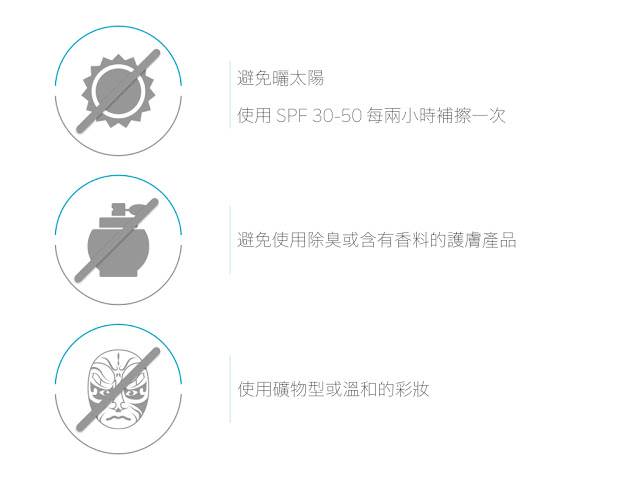
常見問與答
治療除毛主要是針對生長期的毛髮進行破壞,因生長期的毛髮具有最濃密的黑色素含量,經過雷射治療後再長出之毛髮也會變細變少。
除毛過程中很難涵蓋所有毛髮,少部分的毛髮無法完全受到破壞,經過一段的毛髮休止冬眠時期,毛髮可能又會恢復生長,一般來說,各部位毛髮約需6至10次,甚至更多次的治療。
按照毛髮生長期的循環,一般會建議八周進行一次治療,同時也避免該部位在短時間內接受太多熱能量的傷害,導致乾燥產生不適感。
- 避免一個月內使用A酸或果酸類產品,並勿過度日曬。
- 若皮膚有傷口或其他異常狀態不建議療程。
- 術前須刮除毛髮。
- 術前請勿進行拔毛、電針除毛、蜜蠟除毛等,需保留毛囊內髮根。
- 較敏感部位,如 腋下 或皮膚較薄部位,若仍介意疼痛感,可在治療前30分鐘敷麻藥,降低不適感。
- 要達長期明顯的效果,本療程建議 8 ~ 12 次,每次間隔 4 ~ 6 週。
- 療程後1週內,請改用溫水洗澡,建議使用與體溫相近,微帶溫熱感即可。(請避免使用過燙的水清潔,避免肌膚不適與灼熱感)
- 療程後1週內避免可能造成感染或刺激皮膚之行為。例如::三溫暖、SPA、烤箱、泡湯等活動。(避免毛孔過度擴張或皮膚不適)
- 療程後1週內的恢復期,避免刺激保養品的使用。例如:酒精、香料、左旋C、果酸、A酸、水楊酸、杜鵑花酸、或其他酸性刺激產品使用並加強保濕與防曬。
- 若出現微紅點狀,勿過度擔心此乃屬正常現象,但切勿搓揉擦或自行處理。
- 請務必遵照治療過程之時間回診,才可達到除毛最佳效果。
【身體部位】除毛後可正常使用居家保養用品,但1週內避免使用去角質或磨砂膏等刺激產品。
【腋下部位】除毛後1週內避免使用去角質、磨砂膏及體香膏、止汗劑等產品。
※ 若有任何術後問題請務必詢問診所 ※
越L’EXCELLENCE提醒您:
此文章圖文內容僅使用於醫療資訊傳播用途,以上內容所刊登照片皆為院內實際治療經驗內容,並經本人同意使用。
此外,任何療程皆有其風險,且成效因人而異,實際治療內容與改善程度請與醫師面對面評估。